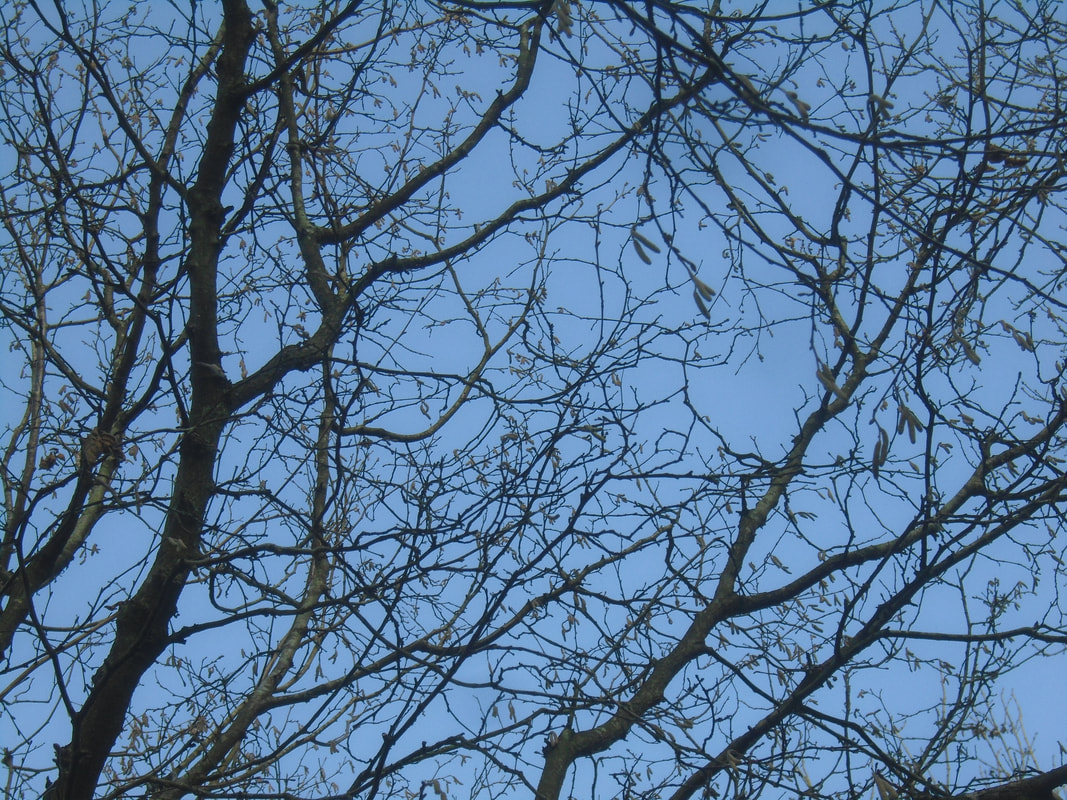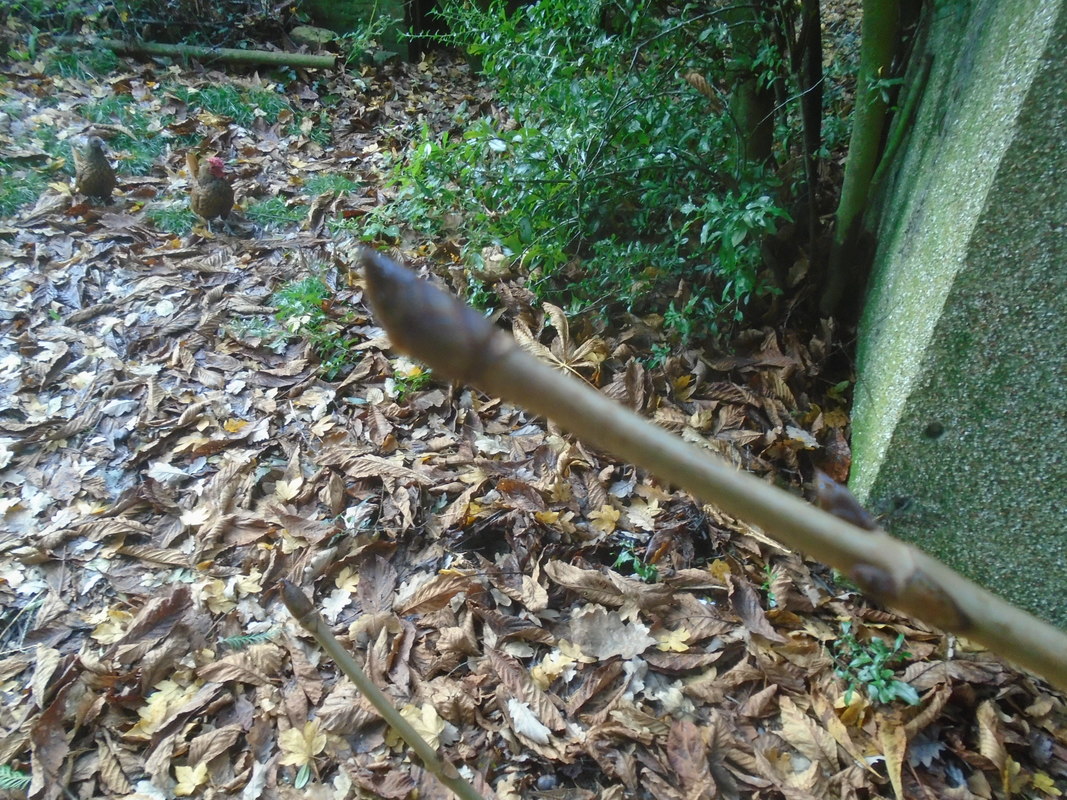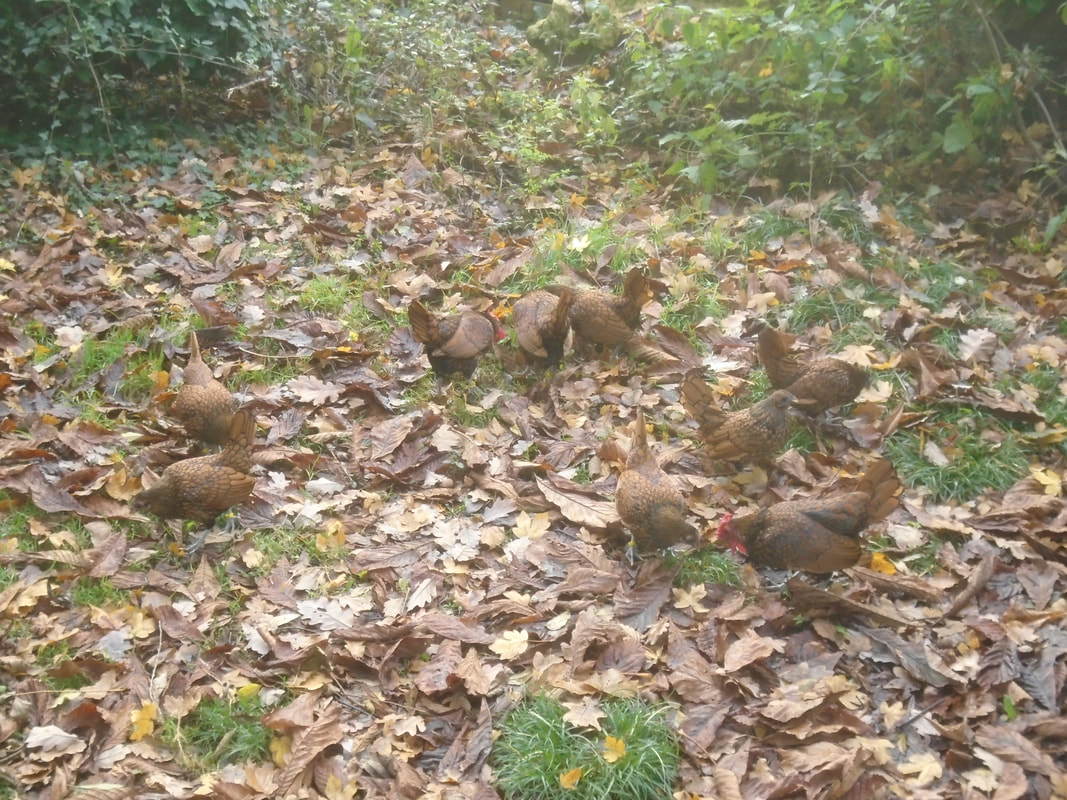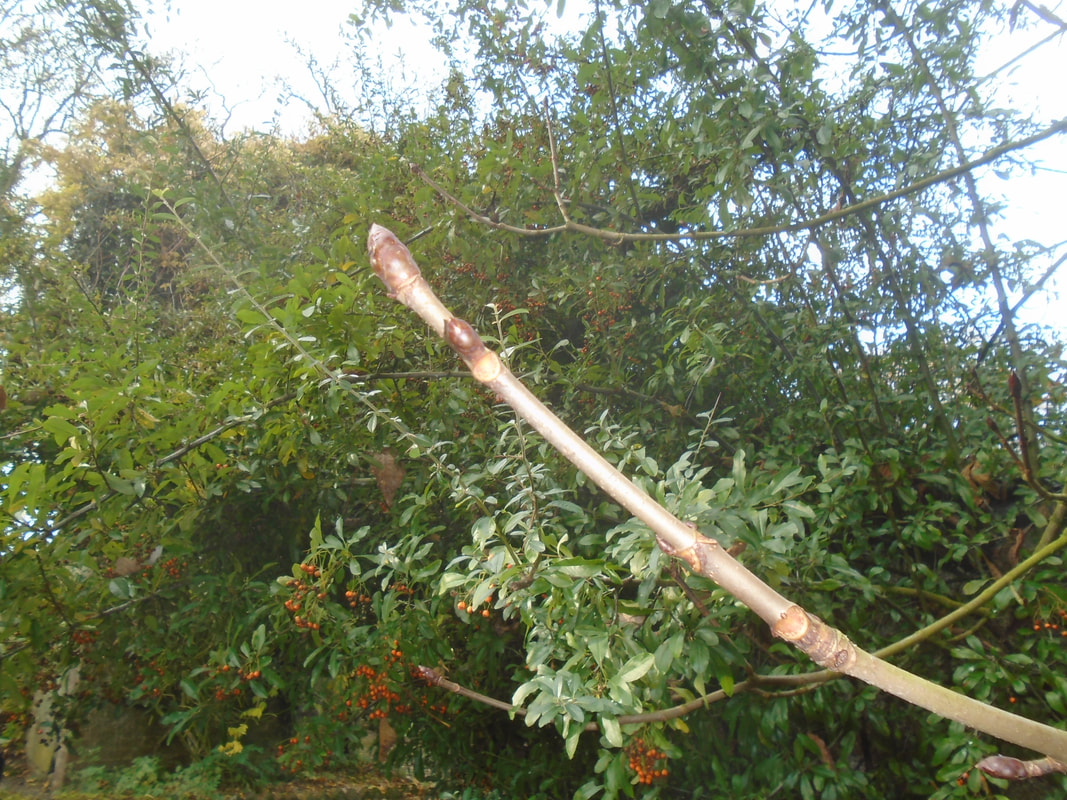Little Dixie and Dougie spotted a rather intimidating sticky bud as it pointed it's shiny finger down at them.
"What tree is that, Uncle Gordon?" Dougie asked.
I explained that it was a Horse Chestnut Tree and of course, being inquisitive, they wanted to know why it was called that.
Their curiosity now unleashed, they wanted to know more. So I continued and told them that the Horse chestnut is a deciduous broadleaf tree native to the Balkan peninsula. It was first introduced from Turkey in the late 16th century and widely planted in the UK. A mature tree can grow to a height of around 40m, and can live for up to 300 years. The bark is smooth and pinky grey when young, which darkens and develops scaly plates with age. Twigs are hairless and stout, buds are oval, dark red, shiny and sticky (like the one pointing at you) and the palmate leaves comprise 5-7 pointed, toothed leaflets spreading from a central stem.
"Which are great fun to root in!" added Dixie as her friends joined in the fun.
"Yes! We loved playing with those" Digby enthused.
I reminded him of his Great Uncle William the Conkerer who was a dab claw at the game, the first record of which was from the Isle of Wight in 1848. Other uses of the conkers besides horse medicines, are as additives in shampoos and as a starch substitute. Chemicals extracted from conkers can be used to treat strains and bruises. And deer and other mammals like eating conkers.
"Why are there so many bees and birds buzzing around the flowers in the spring?" asked little Dolly.
I went on to explain that the flowers provide a rich source of nectar and pollen to insects, particularly the bees. Caterpillars of the triangle moth feed on its leaves, as well as the horse chestnut leaf miner moth, whose caterpillars provide food for blue tits.
As an afterthought, I added that the horse chestnut leaf miner can occur on trees in huge numbers, causing the foliage to turn brown and fall early. We have often seen this happen to the trees on Wattlebury Hill - but there is no evidence to suggest this harms the trees, as most of the damage occurs later in the season.



